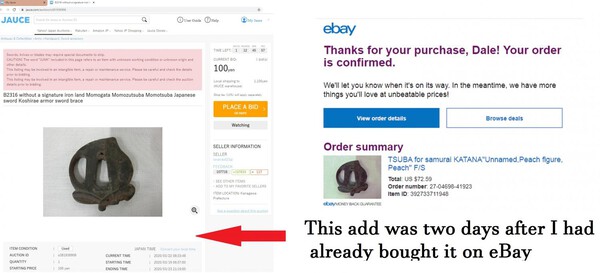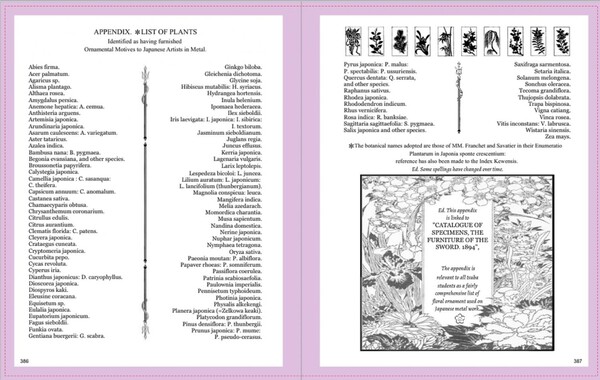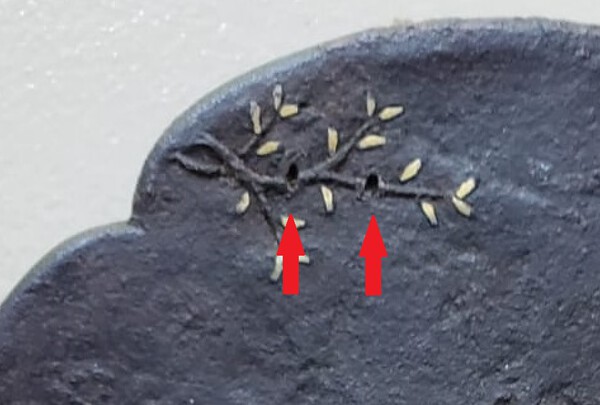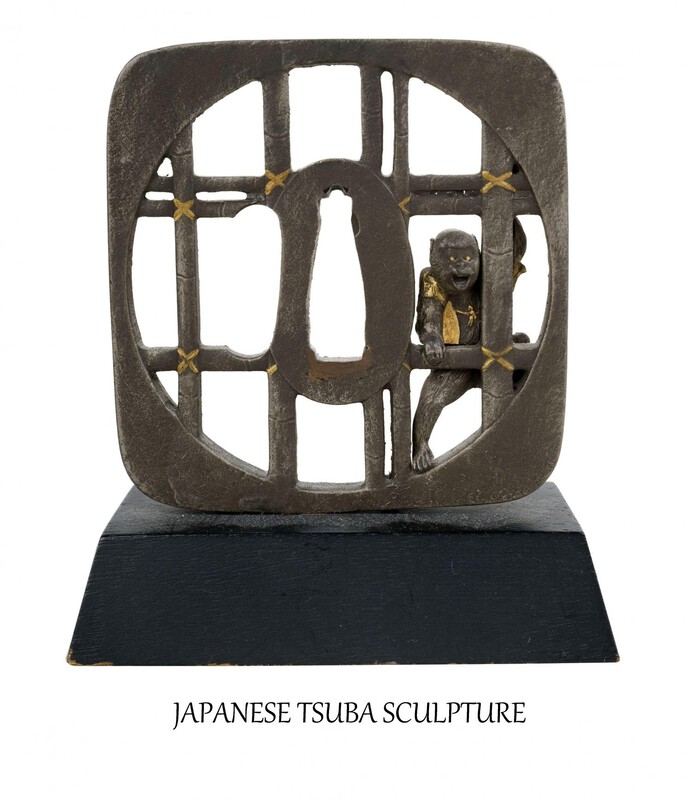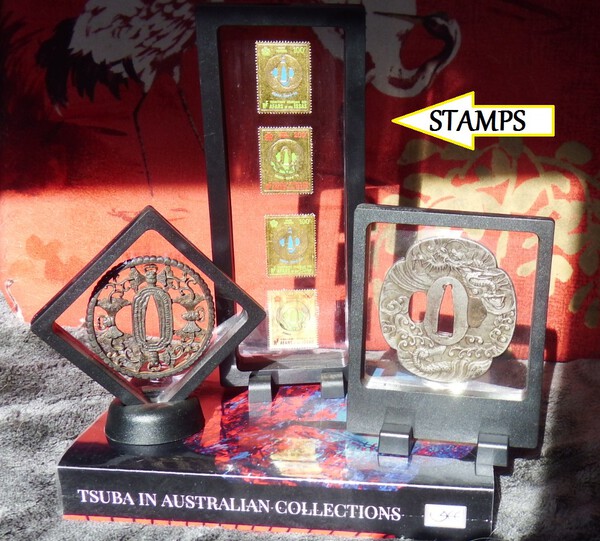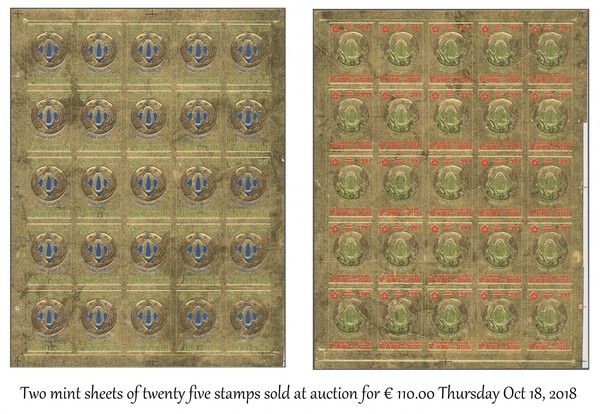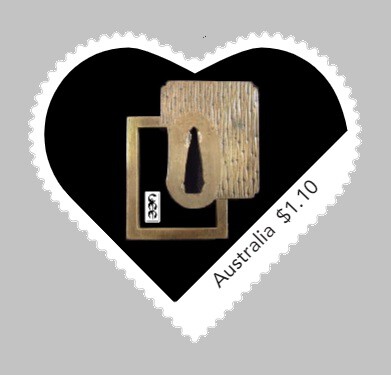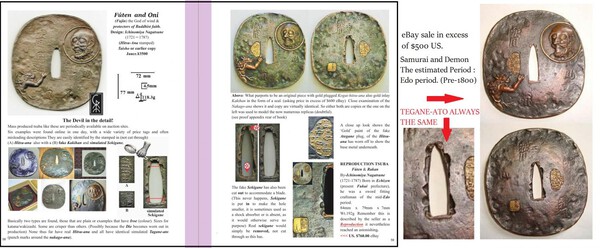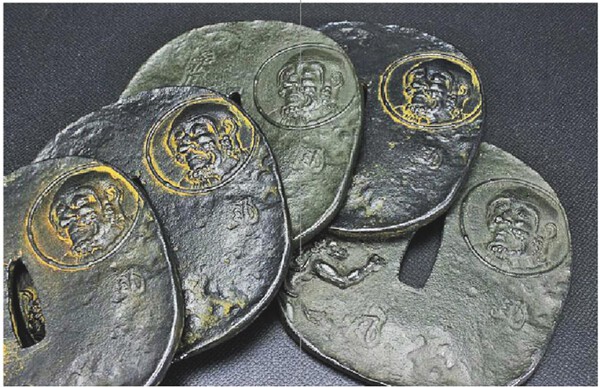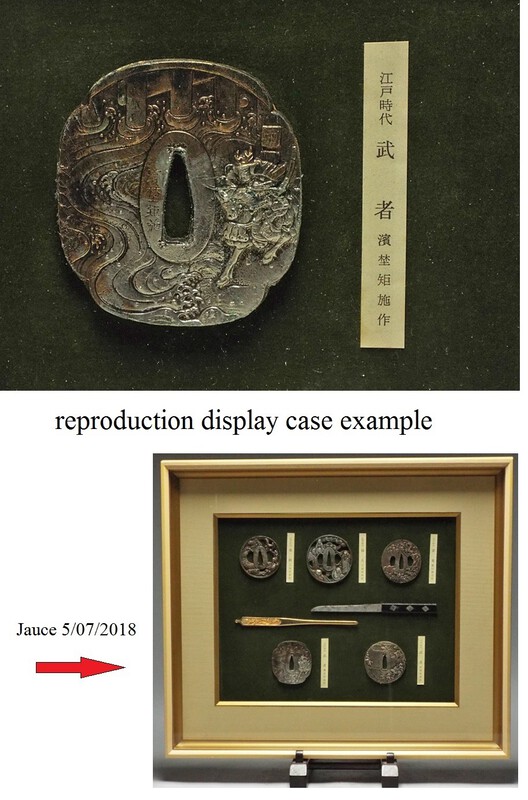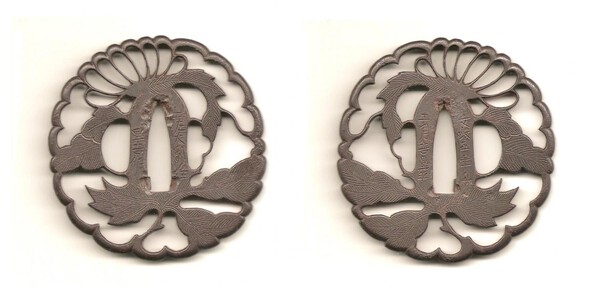-
Posts
3,671 -
Joined
-
Last visited
-
Days Won
100
Content Type
Profiles
Forums
Events
Store
Downloads
Gallery
Everything posted by Spartancrest
-
-
Nothing is ever truly lost - well, apart from memory !
-
Just doing a trawl on the 'net' and came across this little snippet from 2014 https://www.minelab.com/consumer/success-stories/old-Japanese-samurai-tsuba This is something we won't get to do here! "Stop the presses" - this is unbelievable - I only down loaded my latest book last night to Blurb and it arrived at 1.20 pm today! Now that is not service that's witchcraft ! ['Additional Early Articles for Tsuba Study'] Now the proof read!
-
I recently bought the Museum book and was impressed with the quality, I even attempted to do a similar book at the same time Grev was doing his, I need not have bothered!
-
Fantastic Piers I think you have nailed it! It is an interesting story by a very famous writer, and it shows how even great artists can have human failings. Still looking for those tsuba designs......
-
Great the mystery seems solved, has anyone seen any tsuba designs by Kyosai Suiga?
-
I found this very interesting article from a book on Rudyard Kipling's travels through Asia at the end of the 19th century, and would like to share it. From Sea to Sea : Letters of Travel by Rudyard Kipling Publication date 1900 Talk to every one you meet, if they show the least disposition to talk to you, and you will gather, as I have done, a host of stories that will be of use to you hereafter. Unfortunately, they are not all fit for publication. When I tore myself away from the distractions of the outer world, and was just sitting down to write seriously on the Future of Japan, there entered a fascinating man, with heaps of money, who had collected Indian and Japanese curios all his life, and was now come to this country to get some old books which his collection lacked. Can you imagine a more pleasant life than his wanderings over the earth, with untold special knowledge to back each signature of his cheque-book ? In five minutes he had carried me far away from the clattering, fidgety folk around, to a quiet world where men meditated for three weeks over a bronze, and scoured all Japan for a sword-guard designed by a great artist and — were horribly cheated in the end. 'Who is the best artist in Japan now ' I asked. 'He died in Tokio, last Friday, poor fellow, and there is no one to take his place. His name was K.., and as a general rule he could never be persuaded to work unless he was drunk. He did his best pictures when he was drunk.' 'Ému. Artists are never drunk.' 'Quite right. I'll show you a sword-guard that he designed. All the best artists out here do a lot of designing. K... used to fritter away his time on designs for old friends. Had he stuck to pictures he could have made twice as much. But he never turned out pot-boilers. When you go to Tokio, make it your business to get two little books of his called Drunken Sketches — pictures that he did when he was — ému. There is enough dash and go in them to fill half a dozen studios. An English artist studied under him for some time. But K...'s touch was not communicable, though he might have taught his pupil something about technique. Have you ever come across one of K...'s crows ? You could tell it anywhere. He could put all the wicked thoughts that ever came into the mind of a crow — and a crow is first cousin to the Devil — on a piece of paper six inches square, with a brush of Indian ink and two turns of his wrist. Look at the sword-guard I spoke of. How is that for feeling ?' On a circular piece of iron four inches in diameter and pierced by the pole for the tang of the blade, poor K..., who died last Friday, had sketched the figure of a coolie trying to fold up a cloth which was bellying to a merry breeze — not a cold wind, but a sportive summer gust. The coolie was enjoying the performance, and so was the cloth. It would all be folded up in another minute and the coolie would go on his way with a grin. This thing had K... conceived, and the faithful workman executed, with the lightest touches of the graver, to the end that it might lie in a collector's cabinet in London. 'Wah ! wah !' I said, and returned it reverently. 'It would kill a man who could do that to live after his touch had gone. Well for him he died — but I wish I had seen him.' Is it a reasonable guess that the mysterious K.... is none other than Kano Natsuo? [The book being published in 1900, and taking time to write and get printed - the death of Kano Natsuo in 1898 would certainly fit the timing.]
-
I saw the 'guribori' up for auction but it looked to me to be applied rather than cut into the base plate, There were no side views in the original photos - optical illusion? I thought guribori was a carved technique not added. Does the white line show reflected light or a buildup of dirt against the applied layers? And is that a fukurin as well?
-
Botanical names of flora used as decoration on Japanese sword furniture: Taken from CATALOGUE OF SPECIMENS OF Japanese LACQUER & METAL WORK. EXHIBITED IN 1894 Part II. THE FURNITURE OF THE SWORD. By A. H. CHURCH. As to one class of decorative motives - those borrowed from the vegetable kingdom - it is by no means an easy matter to gather complete information …...... the precise identification of the many plants represented on the metal accessories of the sword not having attracted the attention it deserves. On this account a list is given in an Appendix-[see below] of the systematic names of a number of plants which the amateur of tsuba, kozuka and fuchi-kashira, is not unlikely to encounter, and some of which are exceedingly common. Abies firma. Acer palmatum. Agaricus sp. Alisma plantago. Althaea rosea. Amygdalus persica. Anemone hepatica: A. cemua. Anthisteria arguens. Artemisia japonica. Arundinaria japonica. Asarum caulescens: A. variegatum. Aster tataricus. Azalea indica. Bambusa nana: B. pygmaea. Begonia evansiana, and other species. Broussonetia papyrifera. Calystegia japonica. Camellia japonica : C. sasanqua: C. theifera. Capsicum annuum: C. anomalum. Castanea sativa. Chamaecyparis obtusa. Chrysanthemum coronarium. Citrullus edulis. Citrus aurantium. Clematis florida: C. patens. Cleyera japonica. Crataegus cuneata. Cryptomeria japonica. Cucurbita pepo. Cycas revoluta. Cyperus iria. Dianthus japonicus: D. caryophyllus. Dioscorea japonica. Diospyros kaki. Eleusine coracana. Equisetum sp. Eulalia japonica. Eupatorium japonicum. Fagus sieboldii. Funkia ovata. Gentiana buergerii: G. scabra. Ginkgo biloba. Gleichenia dichotoma. Glycine soja. Hibiscus mutabilis: H. syriacus. Hydrangea hortensis. Inula helenium. Ipomaea hederacea. Ilex sieboldii. Iris laevigata: I. japonica: I. sibirica: I. textorum. Jasminum sieboldianum. Juglans regia. Juncus effusus. Kerria japonica. Lagenaria vulgaris. Larix leptolepis. Lespedeza bicoloi: L. juncea. Lilium auratum: L. japonicum: L. lancifolium (thunbergianum). Magnolia conspicua: leuca. Mangifera indica. Melia azedarach. Momordica charantia. Musa sapientum. Nandina domestica. Nerine japonica. Nuphar japonicum. Nymphaea tetragona. Oryza sativa. Paeonia moutan: P. albiflora. Papaver rhoeas: P. somniferum. Passiflora coerulea. Patrinia scabiosaefolia. Paulownia imperialis. Pennisetum typhoideum. Photinia japonica. Physalis alkekengi. Planera japonica (=Zelkowa keaki). Platycodon grandiflorum. Pinus densiflora: P. thunbergii. Prunus japonica: P. mume: P. pseudo-cerasus. Pyrus japonica: P. malus: P. spectabilis: P. ussuriensis. Quercus dentata: Q. serrata, and other species. Raphanus sativus. Rhodea japonica. Rhododendron indicum. Rhus vernicifera. Rosa indica: R. banksiae. Sagittaria sagittaefolia: S. pygmaea. Salix japonica and other species. Saxifraga sarmentosa. Setaria italica. Solanum melongena. Sonchus oleracea. Tecoma grandiflora. Thujopsis dolabrata. Trapa bispinosa. Vigna catiang. Vinca rosea. Vitis inconstans: V. labrusca. Wistaria sinensis. Zea mays. [# SOME SPELLINGS HAVE CHANGED SINCE 1894]
-
I have some information on the plant types used by the Japanese for decoration on sword fittings. If there is general interest I can supply the list in text format - the image is from one of my books and may not be very clear.
-
Omar Do you think it may be missing something of the decoration on the ura side? The two small holes look like they may have held something in the tree branch. Nice piece and in very nice condition.
-
Omar Thirty two tsuba shown, I had no trouble finding google translate top of the page double click right.
-
Tom As George says you can eventually remove the rust with antler or ivory, I make my own 'cleaners' from long cuts from thick cow bone which when boiled for an hour will last indefinitely. These three types are used because while they will remove active rust they won't scratch the solid iron. I also agree don't play with the gold areas. The guard looks very nice with a heck of a lot of detail, you are starting with a fine example.
-
George The bulk of the guard is cast in some sort of alloy- heavy- the monkey is separately cast and has a hole in his hand that attaches to the guard, all the extra's are painted on - some better than others I think the monkey is secured with some sort of glue as well because mine came off and that's the way I repaired it. The sharp eyed may notice the monkey has been set in the hitsu-ana in this second example. Mine is set like the first example but I have seen about fifty/ fifty so it may have depended on who assembled them. Also my example didn't have all the casting faults as the second obviously does, so the quality control must have eased off. They are decorative but I don't suggest they are usable. The back of his jacket is detailed - the original must have been really nice. Saru in a Silk Shirt?
-
Just a heads up on another non-tsuba that appears from time to time. These desk ornaments were made back in the late 70's, not the 1870's, the 1970's. They were made as museum replicas for a travelling exhibition on Japanese swords and sword furniture, I know because I went to it in Sydney about 1979.(yes I am that old) I have seen these passed off as genuine mounted examples of Edo work and some have the bases removed to make them 'serviceable'. As a replica I paid $40 which was fairly high priced at the time, but some are now being sold for $400 or more - another is on auction right now - opening bid $20 which sounds fair but I wouldn't bid much more!
-
David I have a quote from one of the early experts on tsuba, who was instrumental in many ways on introducing the West to this field of Japanese study. "The followers and students of some masters took the name of the founder of the workshop and adopted the use of his signature; so various qualities of execution of guards appear and without counting the constant counterfeits, many pieces can bear the name of a famous artist. It is therefore preferable to appreciate the execution of the work before reading the signature, which is important only when the work is authentic; so I refrained from mentioning it." Tadamasa Hayashi (林 忠正, 1853–1906) This is translated from French (by me) so it may have lost a little in translation - being now third hand. But I think what he meant most was basically forget the signature, appreciate the guard. Regardless of who did it, if you like it, that's all that is important. I think it is a nice piece.
-
Grev. try here https://www.ebay.com.au/itm/402254193496?hash=item5da837e358:g:-~kAAOSwN2VZWGX5 or one closer to home https://www.ebay.com.au/itm/402257393392?hash=item5da868b6f0:g:CNAAAOSwy1ZdM14L http://www.worldstamp.nl/products/expo-70-international-exposition-osaka-Japan-2v/ https://www.ebay.com.au/itm/123645307516?hash=item1cc9d5aa7c:g:HdcAAOSwN3lcZSbB eBay have a few they vary a lot in price and postage is often the killer. One here in Sweden for anyone local? https://www.tradera.com/item/150317/342616100/afars-issas-osaka-expo-70-guldmarken-mi-43-44-xx They look good in the film display cases. Have fun.
-
Well I have looked and looked for any other tsuba related postage stamps and come away disappointed. That was untill I remembered that here in Australia we can order our own stamp designs - so I thought why not? It then became a problem of what guard to display, I tried several but this is a case of the more detailed the image on such a small surface the less you actually see, so that I finally went for a stark outline guard against a black background - the heart shape indicative of my 'love' of tsuba. So if you still use snail mail - why not get your own stamps printed!
-
You could perhaps clear the white residue off simply by boiling in demineralized water, that should not damage any remaining patina.
-
Hi David, I think somewhat like you, that anyone will sign uniquely every time (whether they choose to admit it or not) so I am more wary of mei that are exactly like the 'established' examples - if you want to fake, you copy the signature exactly - if you are the true artist the signature will simply flow and change over time. However if this holds true, no amount of expert opinion can say with absolute certainty that any piece is by the original artist. - even Shinsa experts get it wrong sometimes. I like the fact that your guard has been mounted multiple times and the slightly raised rim, but there is very little, by way of decoration.
-
To prove the case that these things are still being made and the sellers are not reluctant to sell in batch lots, check these 'Drink - coaster' quality repro's https://www.jauce.com/auction/u351947663
-
I am glad someone has tried these cases out, since my post back on the 12th April. As I said at the time I have had several items displayed for about 4-5 years with no damage. I don't collect Fuchi/kashira but they look good displayed this way and you get a full view both sides - next step they need to come up with a magnifying screen for the smaller items https://www.ebay.com.au/itm/Clear-Jewelry-Suspended-Coins-Floating-Display-Case-Stand-Holder-Box-Easy-Use/133196048734?var=432540555804&hash=item1f031a695e:g:jAkAAOSwl3xb0BhQ They do slightly larger cases than the 90 x 90, and shop around as these sites can vary in price week by week.
-
George M What fascinates me is the range in quality of these fakes, they range from beautifully detailed with great iroe (though no inlay) to others so coarse that the features are almost totally lost. The same applies with the 'geisha pulling the tongue of the monster' examples, as well as the 'Oni and Futen'. Both appear in large numbers and no doubt other examples apply. I am aware that many fakes/ copies were made for glass cased sale items but I don't know if they were intended as domestic decoration in Japan or purely for export. It is an interesting side to serious collecting - I fear for novice collectors.
-
John Thank you for that, I found a photo of the guard with the name SATOYOSHI-saku. Saku is the name of a town near Nagano but I don't know what schools made this place home.
-



